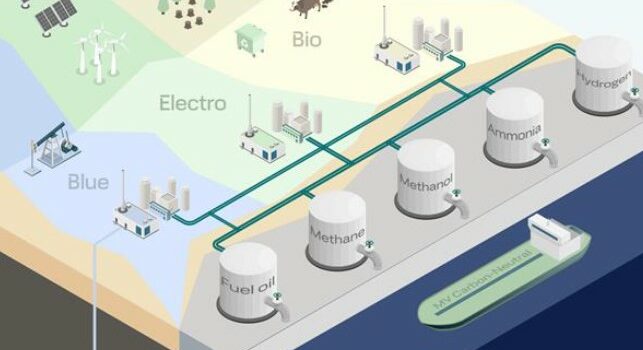
Infrastructure and bunkering challenges for zero-carbon fuels
– a part of the development of a Nordic Roadmap for the introduction sustainable zero-carbon fuels in shipping
The Nordic Roadmap aims to accelerate the transition to zero-carbon fuels by reducing the key barriers to their uptake. The term sustainable zero-carbon fuel is used to indicate fuels with potential zero climate impact throughout their lifecycle. One of the objectives of the Nordic Roadmap project is that the Nordic countries have established a strategy for infrastructure development and for the use of harbors as green corridors or green energy hubs. As part of this objective, this report has assessed the potential infrastructure and bunkering challenges for the three selected fuels, hydrogen, ammonia and methanol. This includes an analysis of the supply and demand side of the market, as well as a selection of ports that have the potential to be a part of green corridors and hubs in and between the Nordic countries.
In this report we have estimated the potential demand and supply of the three fuels. When comparing the estimated potential demand for hydrogen and ammonia/methanol with existing and planned production of the three fuels in the five Nordic countries, an interesting pattern is revealed. While the planned production of hydrogen is significantly higher than potential demand from the Nordic ship traffic, the opposite is true for ammonia and methanol. In addition, due to a demand from other sectors as well, the potential supply for the shipping industry will be lower. Our mapping of production plans gives little information about the shares that are earmarked or will be available for the maritime industry. Almost none of the mapped projects have information about this. This is especially a concern since the demand from the maritime industry as of today is almost non-existent.
One of the objectives of this report is to assess the barriers against establishing potential green shipping corridors and energy hubs in the Nordic countries. In this report, 37 ports were selected to further map the ports plans for bunkering of green fuels in the ports and their assessment of barriers connected to these plans. Eight of the ports are in Denmark, in addition to the main port in Greenland and the Faroe Islands, eight terminals within six ports are in Sweden, ten ports in Norway, seven in Finland and two in Iceland. We find that 18 of the Nordic ports have plans to enable bunkering for at least one of the three fuels. These 18 ports are relevant candidates as green shipping corridor pilots in the development of the Nordic Roadmap. The adoption of alternative fuels will require close cooperation throughout supply chains between shipowners, operators, ports, fuel producers, distributors and legislators. To realize the ports’ production, distribution and bunkering plans, it is important that the Nordic countries work together on reducing the barriers related to the realization of the ports’ plans.